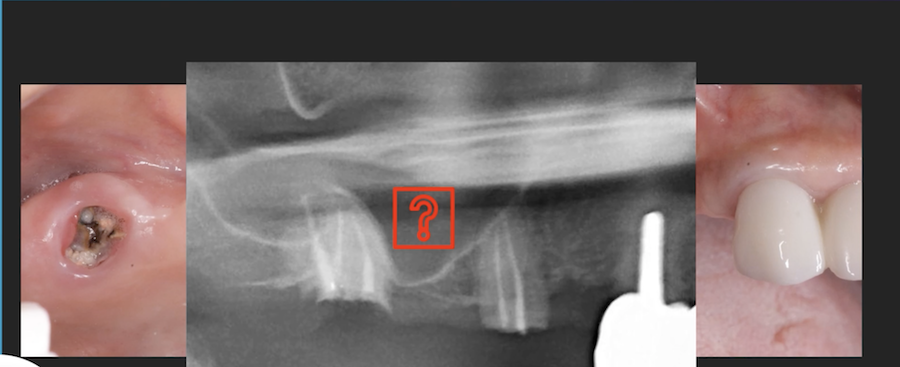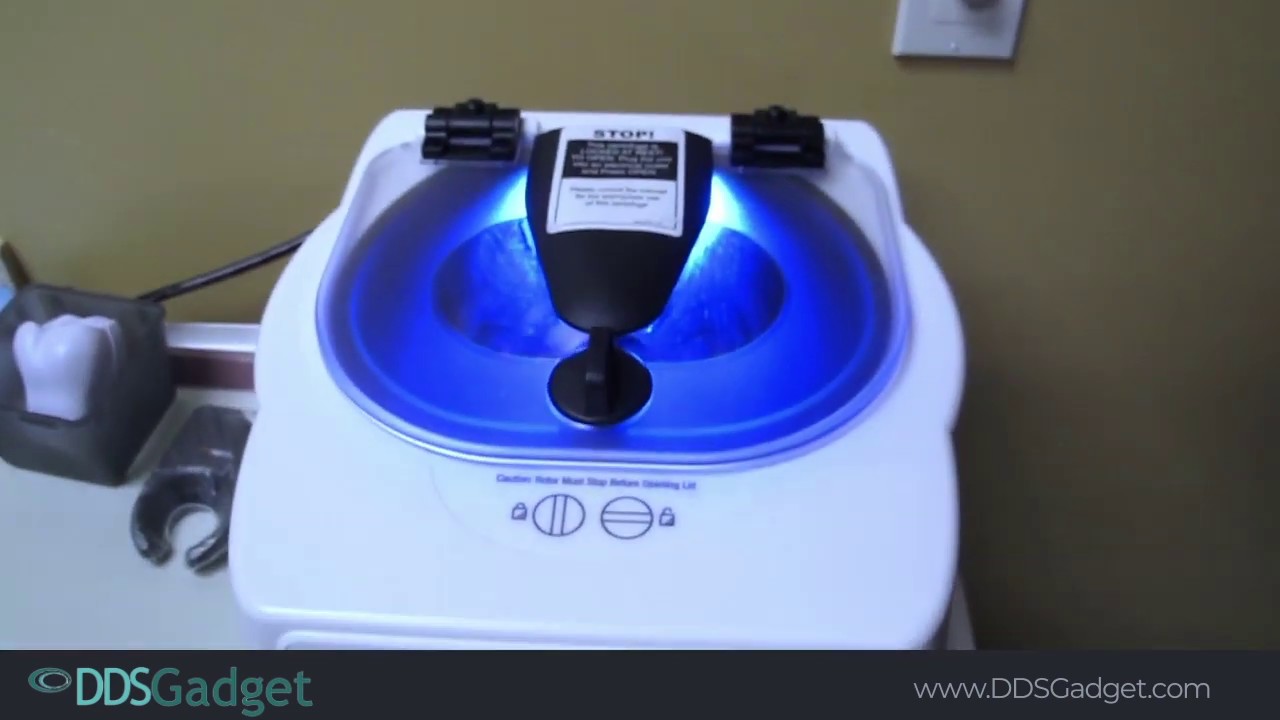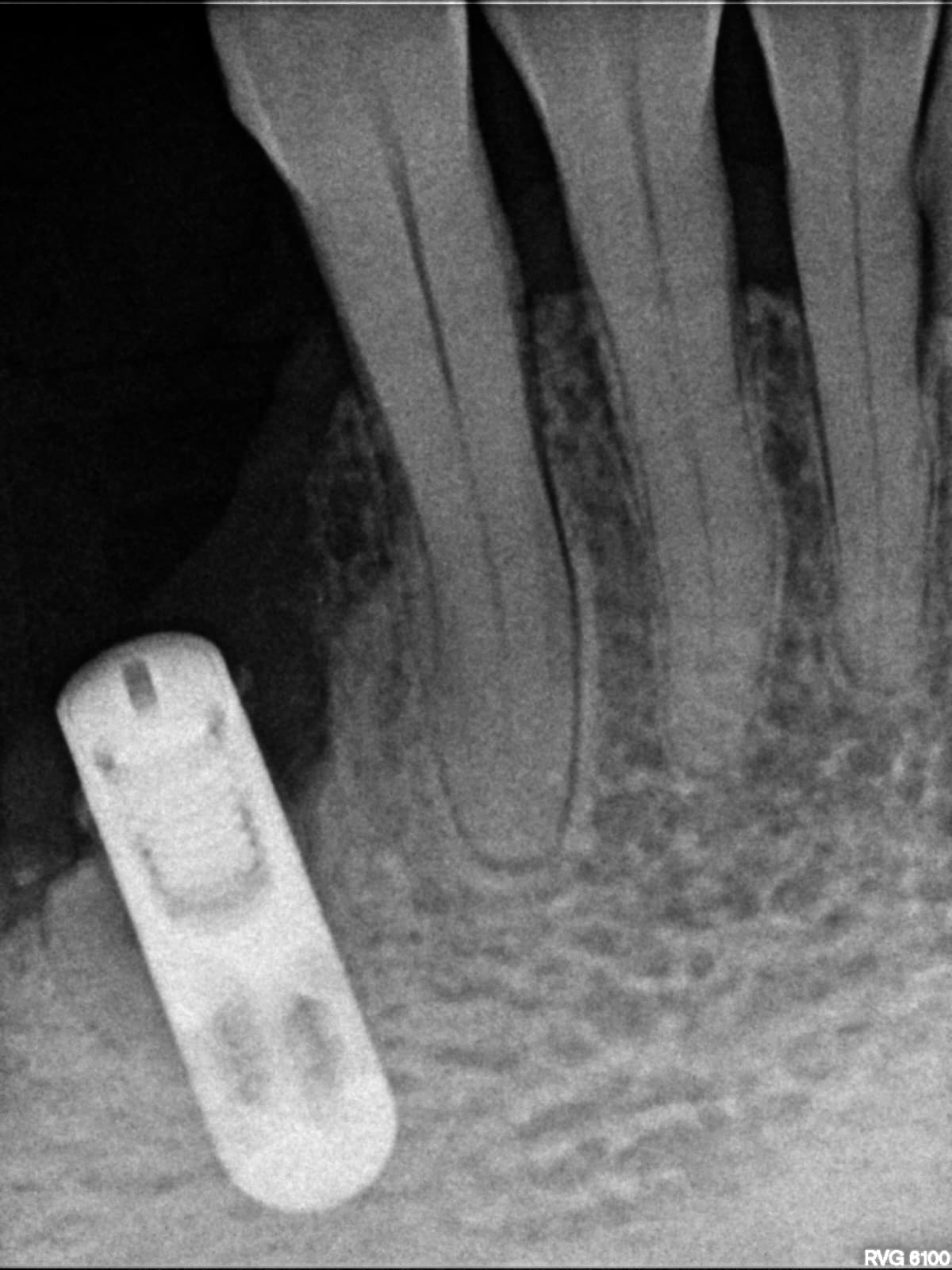Removal of a Titanium Implant with Peri-Implant Disease and Replacement with Ceramic Zeramex XT Implant
This case involves a 30 y/o female with history of severe ulcerative colitis. For the last 1.5 years, she has experienced: periodic fever, muscle aches and weakness. Implant # 3 placed with transalveolar lift in August of 2017 by another periodontist. The patient presented in our office with 25-30% bone loss and 6-7 mm probing depths implant #3. She now wants the implant removed as she feels it may be contributing to her condition. ENT confirmation: no sinus pathology present. Treatment plan was removal, grafting, and placement of a ceramic Zeramex XT Implant. Case photos are below.
2nd photo is 4 months after implant removal and grafting the residual osteotomy, there is a subantral bone height of 3-7 mm and a convoluted sinus floor. 3rd and 4th photos show use of 3.5 mm Densah ® bur spins CCW 1200 RPM to autograft and lift sinus prior to finalizing with ZERADRILL ®. Final photos show Placement of 5.5 x 8 mm ceramic Zeramex XT implant slightly distalized to engage more subantral bone. Collar: .6 mm supracrestal on mesial and distal, 1.6 mm on facial. Sinus lift: 3-5 mm


![]](https://osseonews.nyc3.cdn.digitaloceanspaces.com/wp-content/uploads/2019/10/titanium-implant-3.png)4 months after implant removal and grafting the residual osteotomy, there is a subantral bone height of 3-7 mm and a convoluted sinus floor4 months after implant removal and grafting the residual osteotomy, there is a subantral bone height of 3-7 mm and a convoluted sinus floor



![]](https://osseonews.nyc3.cdn.digitaloceanspaces.com/wp-content/uploads/2019/10/titanium-implant-8.png)Placement: 5.5 x 8 mm Zeramex XT implant slightly distalized to engage more subantral bone. Collar: .6 mm supracrestal on mesial and distal, 1.6 mm on facial. Sinus lift: 3-5 mmPlacement: 5.5 x 8 mm Zeramex XT implant slightly distalized to engage more subantral bone. Collar: .6 mm supracrestal on mesial and distal, 1.6 mm on facial. Sinus lift: 3-5 mmReferences
“Cell viability is negatively correlated with titanium concentration. Further, titanium debris might lead to an inflammatory biologic response of dental peri-implant tissue. Also, cells interact with the debris, eg, with incorporation of particles.” Int J Oral Maxillofac Implants. 2019 Feb 26. The Biological Effect of Particulate Titanium Contaminants of Dental Implants on Human Osteoblasts and Gingival Fibroblasts. Happe A et al.
See also our post here: Dental Titanium Implants and Chronic Inflammation which referenced this article: Titanium implants and silent inflammation in jawbone—a critical interplay of dissolved titanium particles and cytokines TNF-? and RANTES/CCL5 on overall health? Johann Lechner et al.
About the Zeramex XT implant
The Zeramex XT implant is made of zirconium dioxide and has the following characteristics: 2 piece implant system, Screw retained components, Bone level implant, Internal connection, Tapering form with aggressive threads for good primary stability and immediate placement, Platform switch options available because the 4.2mm and the 5.5mm wide implants share the same size connection. For additional cases, see Delayed Placement of Zeramex XT Implants and ZERAMEX XT Ceramic Implant: 1 year follow up of 1st in the world placed


















